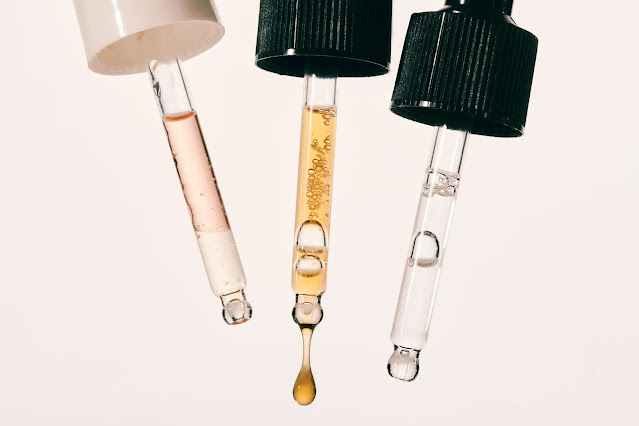
Is it just us, or does our skincare routine sometimes feel like channeling our inner beauty chemist?
From using a pipette to squeeze out the exact amount of serum to mixing different ingredients, we're actually ready to put on a lab coat and get to work. Obviously there's a lot more to product formulations (just ask our product development team).
The most important part of this is that they have extensive knowledge about skin care and ingredients. So, if you have questions about a recipe, who better than a chemist?
We asked skin-care chemist April Basi for advice on ingredient percentages, the differences between synthetic and natural formulas (and whether one is better than the other), her favorite ingredient combinations, and more. Read their answers below.
How important is the percentage of ingredients in a recipe? “The ingredient list (IL) is in descending order, so if an ingredient is among the first five to seven ingredients on the IL, then the percentage of that ingredient is important,” says April.
“If you dig into the IL, these ingredients are almost negligible. “We indicate the percentage of any active ingredient in the formula, such as retinol or tranexamic acid.
But, trust the skin care chemist! If you don't understand the percentages but the formula works for your skin, don't worry. What ingredient combinations do you recommend?
"Vitamin C, Ferulic Acid, and Vitamin E. Vitamin C is a powerful antioxidant; combined with Vitamin E and Ferulic Acid, it increases antioxidant levels fourfold."
"I also recommend niacinamide and retinoids. Niacinamide helps enhance the cell renewal properties of retinoids and also helps reduce the potential for irritation."
What two ingredients would you never mix together? Benzoyl peroxide and retinoids. "These two ingredients cancel each other out when used together, making each other inactive.
This is because both have the same effect (they are cell renewal ingredients)." Benzoyl peroxide can also dry out and irritate the skin. So, if you want to treat acne, choose BHA salicylic acid.
It cleans pores and dissolves oil, but it's gentle - that's why our Acne Soothing Cleanser contains 1.5% salicylic acid. Are synthetic ingredients as effective as real ingredients (also known as natural ingredients)?
"Yes, absolutely. It's a myth that natural ingredients work better. Formulators often find it difficult to preserve natural products because they are very less potent and more likely to cause irritation than chemical ingredients."
Manufacturing Ingredients are sometimes better for the environment.
For example, naturally sourced hyaluronic acid can come from the umbilical cord and synovial fluid of cows and horses, but with a synthetic, vegan version (the only one we use), you can achieve the exact same hydrating results.
How did you become a cosmetic chemist? What does this job require? "I earned my bachelor's degree in chemistry, secured an internship shortly after, and used the experience to get a job as a chemist with a personal care company.
The job required hours of standing time, excellent math skills, height Focus and attention to detail, especially when producing two-phase products like Antioxidant Oil Serum.
How do you ensure product formulas remain stable under conditions such as extreme heat, long periods of time, etc.?
"For products containing active ingredients, such as sunscreen, we ensure that these formulas are tested for stability at different temperatures for two years.
They must pass certain specifications before the end of the two-year period, such as odor, viscosity, specific gravity and pH Worth testing before it can be sold to the public."
Looking for more expert advice? Read Liu explains the difference between retinol and retinoids, according to dermatologist Dr.

إرسال تعليق